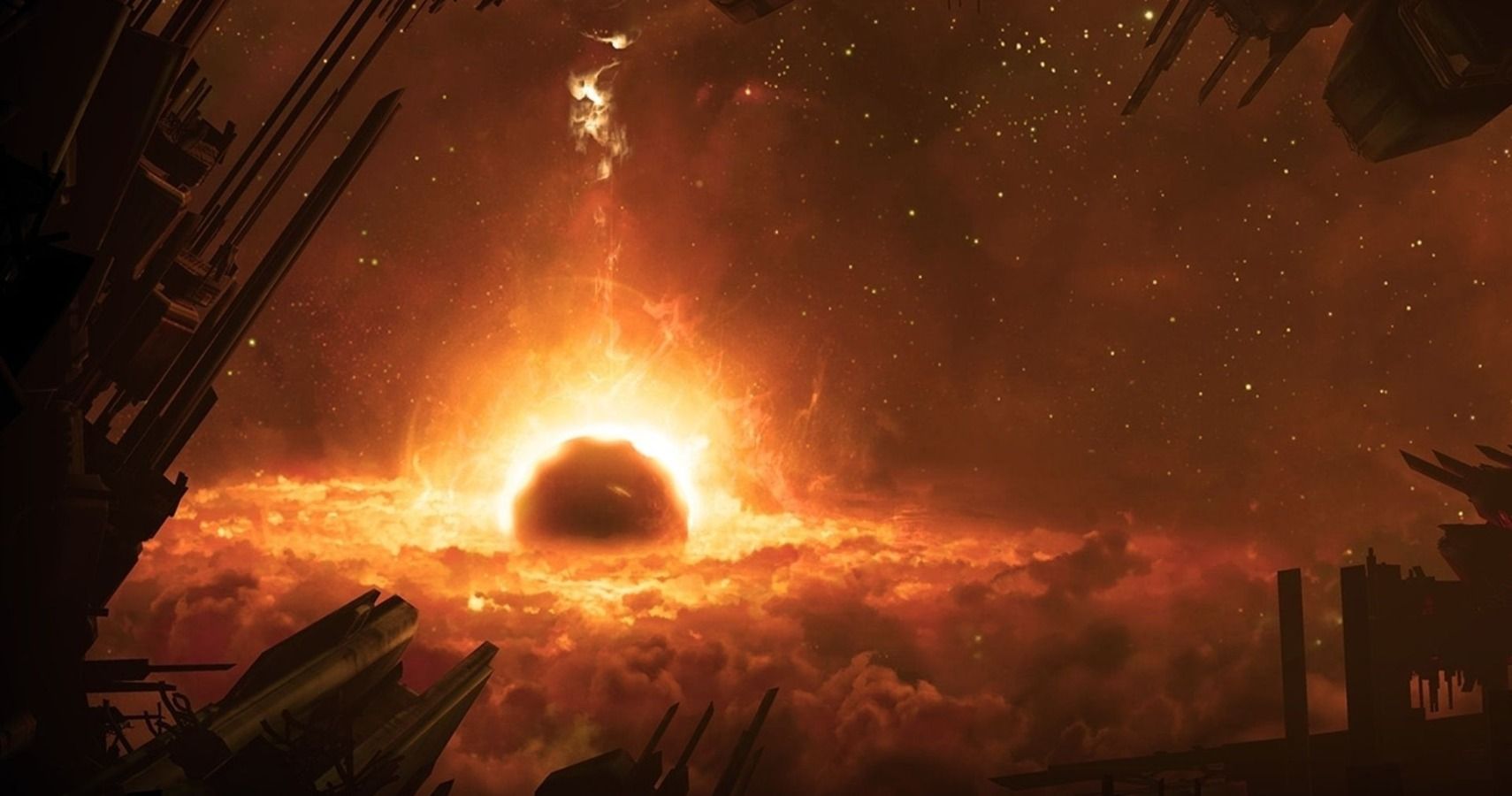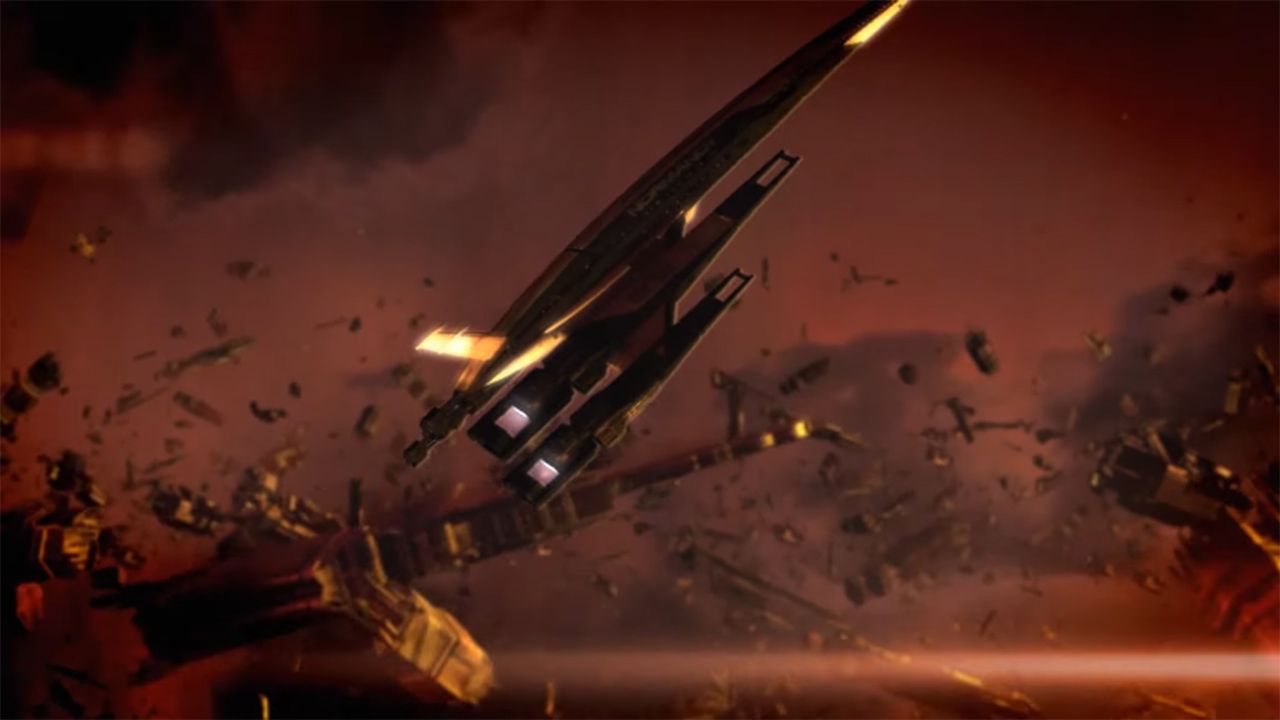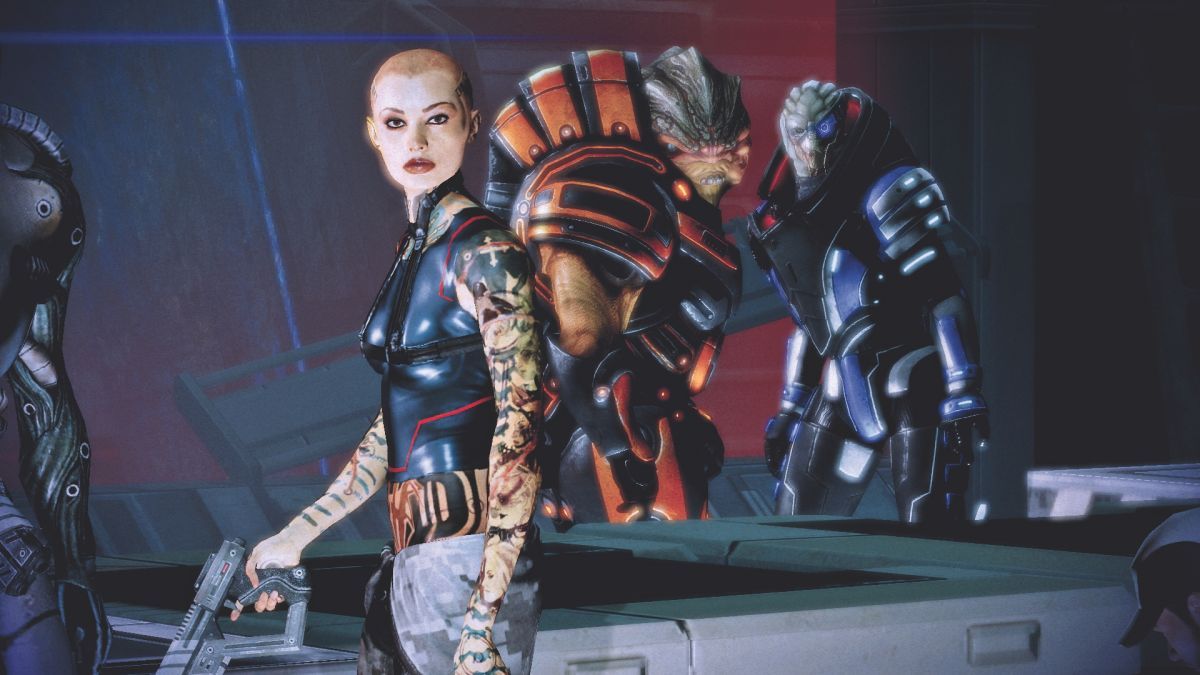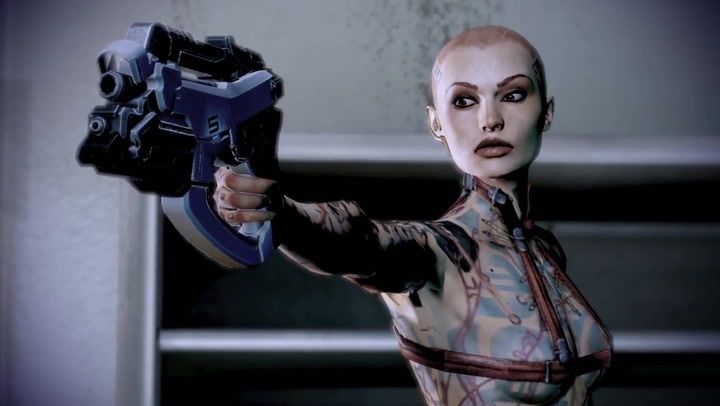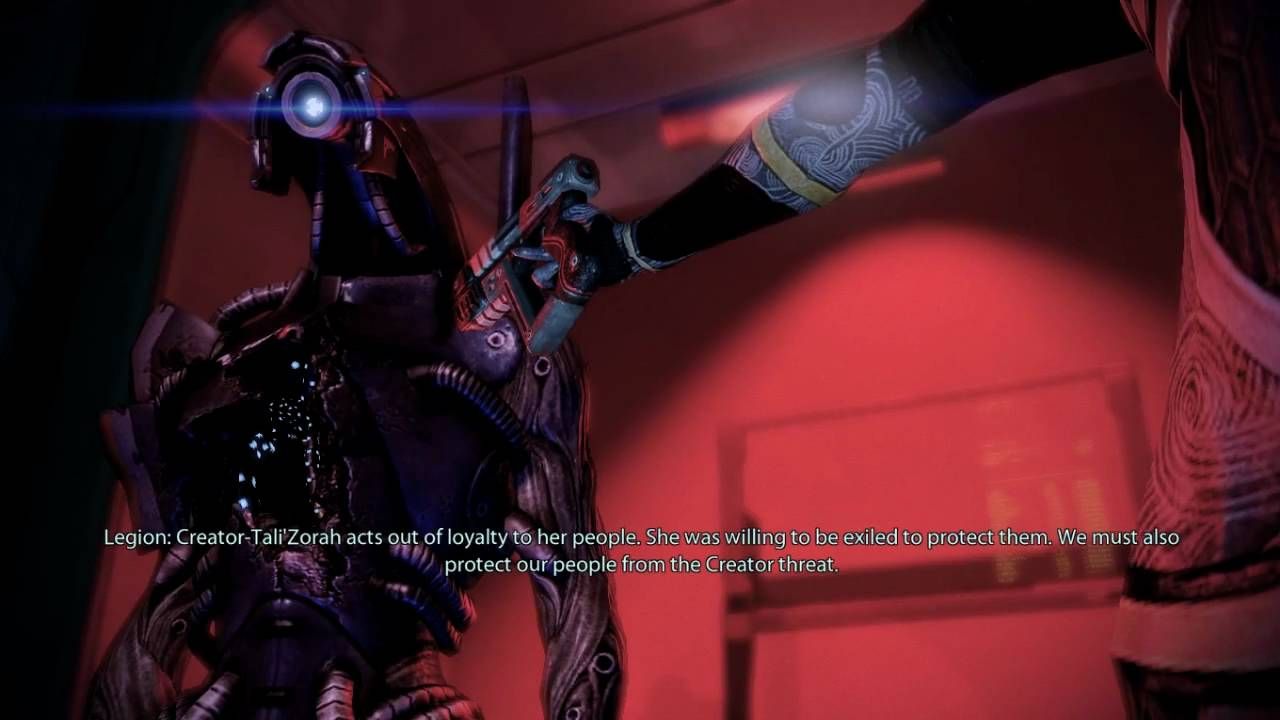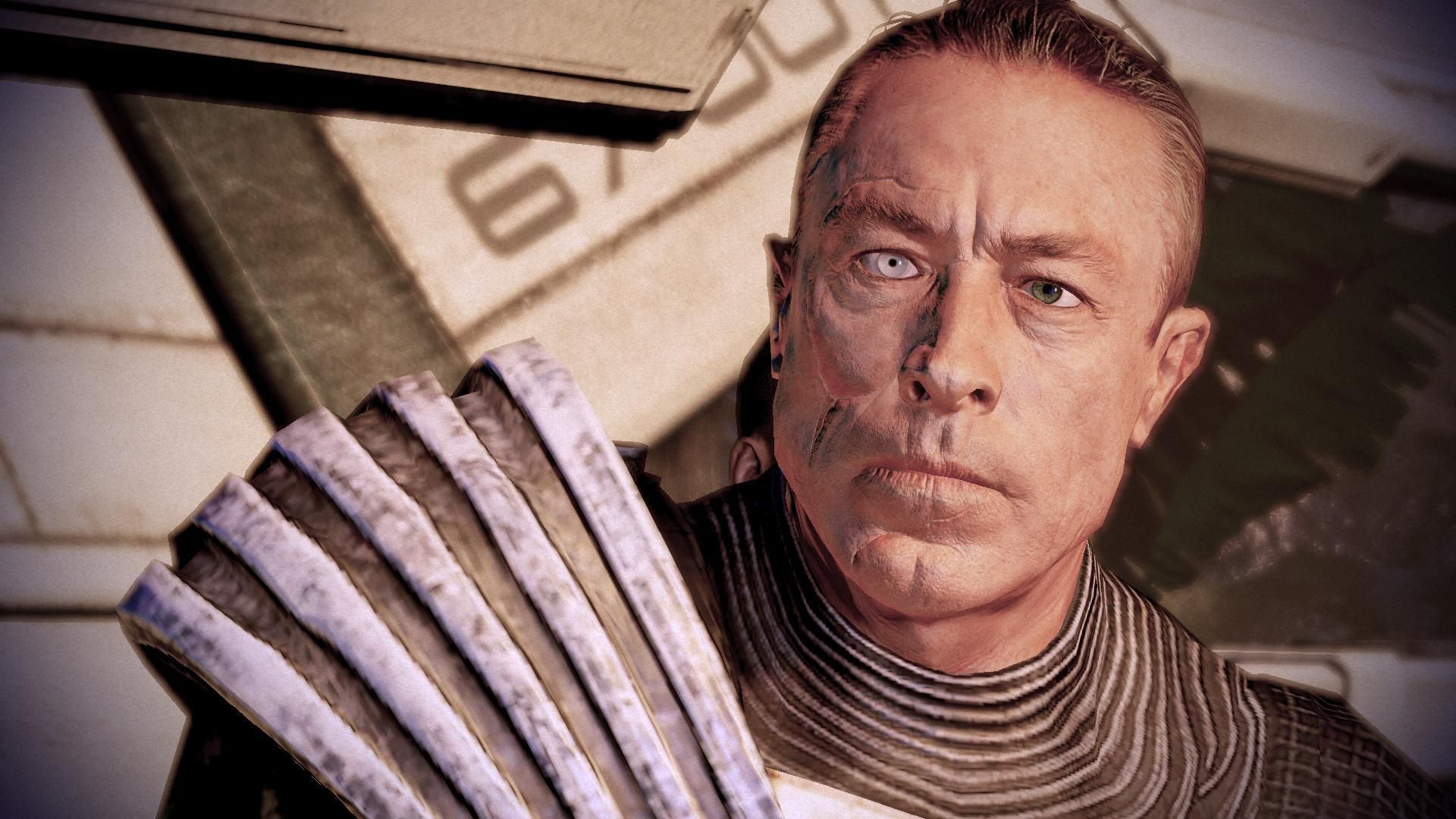The fact Shepard has been dead for two years is barely a footnote when you ask people what they remember about Mass Effect 2. They probably won’t mention new characters right away, either, despite the fact that squadmates like Mordin, Thane, and Miranda are among the most beloved companions in the entire series.
When someone hears the words “Mass Effect 2”, their mind usually wanders straight to one specific thing: the suicide mission.
“Right off the bat, there was already this design in place to have this suicide mission,” Mass Effect 2 writer Brian Kindregan tells me. “The whole game would centre around: recruit your team for the suicide mission, try to make them loyal, and then go on the suicide mission and see who survives. I got there very early and that was already in place.
“I’m not sure exactly who the very smart and talented people who came up with [the suicide mission] were, but I’d say the core people for narrative, structure, worldbuilding, and gameplay were Drew Karpyshyn, the managing editor and soon-to-be-lead Mac Walters, and Casey Hudson, who was the executive producer but always had a very strong hand in every area of the game.”
Most people who have played Mass Effect 2 will already have a fair idea of what the suicide mission entails. Essentially, you assault the Collector base with all ten of your companions - 12 if you’ve picked up Kasumi and Zaeed from their respective DLCs - and can actually lose them. As in they die, permanently, if you make a mistake. They won’t return in Mass Effect 3.
These mistakes come in two forms: either you failed to gain a companion’s loyalty throughout the game, which is accomplished by completing their specific loyalty mission, or you assign a squadmate to a task they are not capable of executing properly. For example, when you need to assign a leader for the team to escort survivors back to the Normandy, Garrus is a great choice - he’s lost people before, and is determined to never let that happen again. On top of that, his years in C-Sec and stint as a certain rebel sniper shortly thereafter have made him a natural leader. If you assign someone like Legion, Tali, or Thane, however, they will die alongside the entire squad they were attempting to lead.
This happens throughout the entire mission. You need a tech expert to deal with vents, meaning that the only correct choices are Legion, Tali, or Kasumi. Biotic shield? It has to be Jack or Samara, whose abilities far outweigh the other squad members. The entire game revolves around teaching you which characters are best-suited to each role, to the extent that the suicide mission itself was one of the earliest concepts for Mass Effect 2 - the game was built around the suicide mission, as opposed to the other way around.
And so, character writing became the core tenet of Mass Effect 2’s narrative. This was largely accomplished by writing three-dimensional companions based on fundamental guidelines, which had all of the basic information about who each squadmate needed to be in order to fit the story.
“We had archetypes for each of the followers,” Kindregan tells me. “The Mystic Warrior was the archetype for Samara. We don’t know much about her, but we know that she’s a tough warrior and she has a mystical connection.
“Jack’s archetype was The Convict. Not every aspect of the original archetype survived. I remember Jack’s archetype description was a tattooed prisoner with a drug addiction. I think as development went on the drug addiction part fell off, as I recall for two reasons. I think there was concern about drug use at the time. Even with an M rating, there were parts of the world where if drug use seemed to be aggrandized in your game - even if that wasn’t your intention - your game just wouldn't be sold in that country. The other reason it fell away was me, personally, as I started to develop her as a character, I didn't see anyone who had as many control issues as her ever letting their guard down. Maybe if she could lock herself in a time-sealed vault nobody could get into, maybe she’d wanna have a drug experience. But for the most part, she’s not gonna cede control of herself like that.”
Kindregan also explains that Grunt, Mass Effect 2’s lovable “pure krogan” was actually the Grunt archetype. Partway through designing him, it was decided that he’d just be named after the prompt he was based on. “Warlord, legacy, grunt… grunt,” the young krogan says after awakening from his tank. “‘Grunt’ was among the last. It has no meaning. It’ll do.”
Examining this in further detail gives you a pretty good idea of how the suicide mission really is the core element of the entire second game. In fact, GameSpot recently posted audio logs from Mass Effect 2 managing editor Mac Walters - who is now project lead on Mass Effect: Legendary Edition - in which several cut characters are described. I’m personally quite upset that the Quarian King based on Stephen from Braveheart - or, as some of you may know him, the crazy Irishman - never made it into the final game.
There’s also a lot that transpires in between introducing archetypal characters and embarking on the suicide mission. In general, each individual character had two core chapters: their acquisition mission, and their loyalty mission. The former saw you recruiting them as a companion - waking Grunt up from the tank, or rescuing Jack from prison - while the latter gave you an opportunity to earn their loyalty, ensuring they would survive the suicide mission and make it to Mass Effect 3.
But it’s also much more complex than this. As a means of further raising the stakes, BioWare designed certain circumstances in which you could actually lose a character’s loyalty, which usually occurred pretty close to the suicide mission, meaning that there’s no way of safely bringing them through. One of the most famous examples of this is the confrontation that transpires between Jack and Miranda.
“In a confrontation like that… there’s the Tali and Legion one, and I think there’s one other,” Kindregan tells me. This “one other” actually refers to a cut confrontation between Grunt and Mordin that never made it into the final version of Mass Effect 2. There are several reasons as to why it was cut, from voiceover sessions being finished to the simple fact that you already had two entire sequences in which you could forfeit a character’s loyalty. Having a third one right near the end of the game would begin to make it feel pretty unbalanced.
Also, although Kindregan says this probably wasn’t as prominent a reason as the ones mentioned above, you need to consider Grunt’s character for a minute. “From a purely narrative standpoint, I would say that - if I was Grunt, with his level of emotional intelligence, and I found out what he found out, I wouldn’t go argue with Mordin,” he explains. “I‘d walk into Mordin’s lab, walk up to him, and he’d probably think I’m here to talk and he wouldn’t be ready for it, and I’d bash his head in. And then Mordin would be dead. Narratively there’s a pretty good reason for that to not happen.
“You could do it with Wrex much better. Wrex would have a more nuanced approach, but that’s not in Grunt’s manual.”
Back to Jack and Miranda: Mass Effect 2’s loyalty-altering confrontations had an awful lot going on under the hood. When you consider that each character in Mass Effect 2 was written by a single person, you can recognize that confrontations like these weren’t written with a “right” or “more moral” choice - they were inherently neutral, regardless of your own personal opinion.
“It behooves whoever is writing the character to make that character’s best case,” Kindregan says. “My involvement with that conversation was to try to make Jack’s case for why she was right, but I think whoever was working on Miranda - and that changed a couple of times - it would have been... Theoretically, there should be a journey that you can go on with Miranda that arrives at that same moment where you’re like, yeah, maybe miranda’s being really cold or even shady, but I sort of understand. Maybe she’s a ‘[the] ends justify the means’ kind of person or the danger to humanity is too big.
“There should theoretically be a journey with Miranda that arrives with her in that confrontation and you can be on her side. Those kinds of moments, to me - when they work out well, they’re gold for BioWare. You think you understand the playing field and everything is proceeding the way you thought. You’re like, ‘I’m just getting loyalty here and there,’ and then all of a sudden the game goes, ‘Nope, now you gotta make a choice.’ In theory, I think it’s good. I also felt like Jack came off pretty well in it. To be fair, Miranda would probably have to be one of the hardest characters in the game to write. The philosophy that she espouses is ‘ends justify the means,’ which is something I think we’re all taught all the time is not real. It’s authoritarian, which we’re all taught is bad. It’s a tough gig. I’m glad I didn't have to write Miranda.”
These concepts permeated into every aspect of development. For example, Mass Effect 2 writer Jay Turner explains that when writing Zaeed - whose archetype was “The Veteran” - he almost used an anti-archetypical basis to establish him as a unique character.
“For Zaeed's loyalty mission, I pitched that Zaeed was a co-founder of a mercenary group, which after some back and forth turned into him founding the Blue Suns with Vido Santiago, who had become his worst enemy,” Turner tells me. “That established a cold, revenge-based motive for him, and his personality became that of a war veteran and longtime bounty hunter who would do whatever it takes to complete the mission.
“He's more of a soldier than a leader, and that got him thrown under the bus and ‘killed,’ but through dogged persistence, he survived and even thrived. He became a perspective on PTSD and trauma. I also personally wanted him to be very much the opposite of the ‘BioWare Paladin,’ a guy who was brutal and efficient and who followed orders to the extent that they served his goals. He has survived just about every possible situation and has the stories and scars to prove it.”
Turner also wrote Kasumi, “The Master Thief”, which presented him with the unique challenge of designing acquisition and loyalty missions for DLC characters with much less screen time.
“Zaeed's loyalty mission is literally the only chance the player has to get to know him, so everything from his dialogue to the identity of the villain, to the events along the way had to speak to Zaeed's personality and backstory,” Turner says. “Kasumi's big heist mission is 100 percent based on her desire to connect with her dead lover, even though it seems like you're there to steal technology from a Bond villain. Not to say that these things weren't true for the other loyalty missions, but for the rest of the cast, loyalty missions were more about fleshing the companions out and offering the player a chance to influence them than about getting to know the companions themselves.”
For what it’s worth, Mass Effect 2 and 3 senior gameplay designer Patrick Moran sang Turner’s praise without even knowing I had spoken to him.
“Jay Turner did a tremendous amount of incredible writing on Mass Effect, among other BioWare work, much of it never making it into the game,” Moran said. “He wrote the first DLC missions for Mass Effect 2, including Kasumi and Zaeed. He has a deep respect for the player's sovereignty of choice, an encyclopedic knowledge of the universe, and I'd love for him to have a crack at leading the narrative of a Mass Effect title.”
When you consider all of this together, you can really start to see how the entirety of Mass Effect 2 informs the suicide mission specifically because that’s what it was designed to do from the get-go. The suicide mission was the concept that every character and story was written in response to - it was a defining rule that influenced almost every single narrative arc in the entire game, regardless of how big or small they were.
And so, it’s no wonder that when people talk about Mass Effect 2, they immediately think of the suicide mission. Just like today, it was the most influential and memorable part of the game before development even started in earnest.

